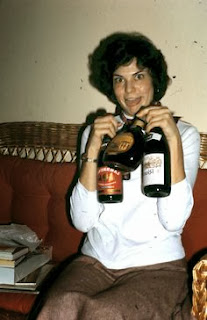 |
| Source |
One of the devil's most important proxies is the Trickster. With the audacity to reveal our base human impulses, and with the wisdom to annunciate core philosophical realities of human experience, the Trickster is a near-ubiquitous character in folk narrative - from all over the world. There are striking similarities in the way in which the devil and the Trickster are portrayed.
Although I am but a beginner in Trickster studies, Professor Harold Scheub is most certainly not. His book, Trickster and Hero (2012), provides a global perspective on the Trickster figure... Here are some excepts from his fantastic book, which I've been simply devouring. Accompanying his insights are some images of the Zanni tricksters of the Commedia Dell'arte repertoire.
 |
| Jacques Callot (1592-1635) Engraving |
"The profane or earth-bound trickster is, like the divine trickster, obscene, aggressive, selfish, amoral. In this, he is closest to the basest of humans. ... Yet, in a way, the profane trickster does retain an echo of the divine connection, if tenuously: he also creates in the sense that he creates a world of illusion; he imposes his own corrupt sense of order on the real world. An agent of chaos, he disrupts harmony; when he establishes harmony, it is according to his own whim, his own sense of order. Trickster combines horror and glee: his is the comedy of the grotesque."
"The trickster through performance binds present and past. The tale is the moment in which past and present are blended in a performance."
"Trickster would have no existence, would have no meaning, would make no sense whatsoever if we did not understand the frame in which he operates. He is forever theatrical. He creates theater in the world that we know, the real world. Without that frame, Trickster's antics are merely obscene and silly But within that frame, he becomes significant and eternal. Trickster makes the flawed moment eternal."
"There are mighty forces, represented by God, Leopard, Lion. The weak cannot prevail over them, they have all the power. They create, they establish boundaries. But in the trickster tale, those boundaries are loosened, violated; the power of gods, of the great animals, is called into question, and chaos results."
 |
| Source |
***
Who are your favorite tricksters? What are your favorite books about the history of the trickster or devil?
Until next time - keep rustling!







































